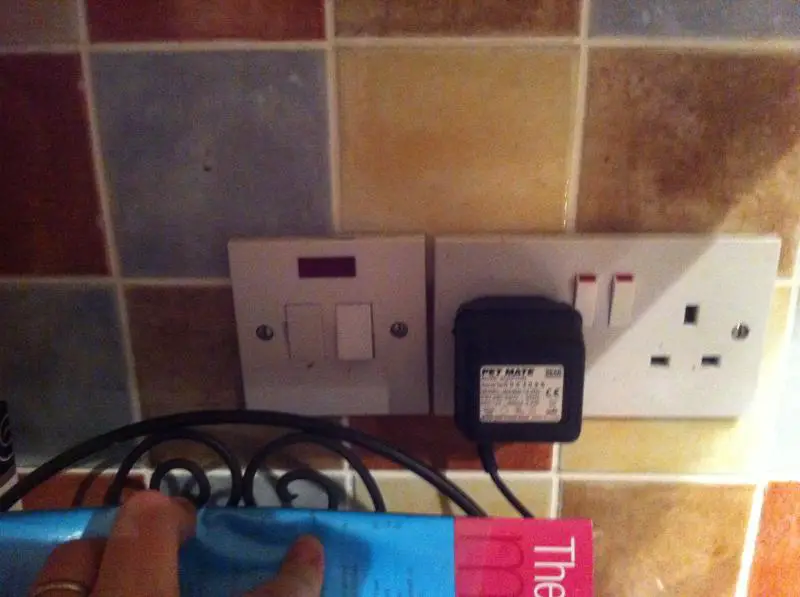Hi all.
I'm totally new when it comes to electrics so please go easy on me!
Our oven needs replacing and today I had an electrician over to give me a quote, as the oven I was hoping to buy is supposed to be "connected to the mains". The electrician briefly looked at my oven switch and said he thought it was just pulled from the socket and that I'd need to have new wires drawn to the main board (which I'm assuming is expensive, he was a bit vague on the total there) if I was going to get an oven over 3 kW (absolute max). The oven I wanted to get is a zanussi and is 3.5 kW, although I found a nice electrolux at 3 kW... The electrician was generally nice and helpful, but he seemed to pay no heed to the fact that I needed to keep costs down and kept suggesting more (and thus more costly work on the various things I need done) - of course this may have all been sound advice, but I don't want to be taken for a ride as I haven't got the first clue about these things.
What has me confused is that the oven that was already built in (by the previous owners, a 2.8 kW whirlpool) has its own switch with a little box next to it which says "fuse", yet there is no dedicated cooker fuse on the main electric board. Is it not possible then that this is a dedicated circuit (which could handle more than 3 kW - or at least handle that much safely and reliably)? I just don't get why there'd be a designated cooker switch if it didn't isolate the cooker...
I've attached a picture of the cooker switch - any thoughts/help/advice is greatly appreciated!
p.s. unrelated to the socket issue, but another issue re needing-a-new-cooker: The old installation has a whirlpool gas hob (which works perfectly well) and the instructions for that say any oven underneath should be (a) fitted with a cooling fan, and (b) made by the manufacturer.
Now, (a) doesn't seem implausible - but wouldn't any modern cooker have a cooling fan? (The biggest problem with the old oven was that it would overheat - just running by itself, no hob - and the fan shut down, or the other way around, either way the control board sometimes stops resonding). But does (b) sound like something I need to go by, assuming any cooker has enough room and there's the required insulating space underneath the gas hob? I'm not a fan of whirlpool after my oven troubles.
I'm totally new when it comes to electrics so please go easy on me!
Our oven needs replacing and today I had an electrician over to give me a quote, as the oven I was hoping to buy is supposed to be "connected to the mains". The electrician briefly looked at my oven switch and said he thought it was just pulled from the socket and that I'd need to have new wires drawn to the main board (which I'm assuming is expensive, he was a bit vague on the total there) if I was going to get an oven over 3 kW (absolute max). The oven I wanted to get is a zanussi and is 3.5 kW, although I found a nice electrolux at 3 kW... The electrician was generally nice and helpful, but he seemed to pay no heed to the fact that I needed to keep costs down and kept suggesting more (and thus more costly work on the various things I need done) - of course this may have all been sound advice, but I don't want to be taken for a ride as I haven't got the first clue about these things.
What has me confused is that the oven that was already built in (by the previous owners, a 2.8 kW whirlpool) has its own switch with a little box next to it which says "fuse", yet there is no dedicated cooker fuse on the main electric board. Is it not possible then that this is a dedicated circuit (which could handle more than 3 kW - or at least handle that much safely and reliably)? I just don't get why there'd be a designated cooker switch if it didn't isolate the cooker...
I've attached a picture of the cooker switch - any thoughts/help/advice is greatly appreciated!
p.s. unrelated to the socket issue, but another issue re needing-a-new-cooker: The old installation has a whirlpool gas hob (which works perfectly well) and the instructions for that say any oven underneath should be (a) fitted with a cooling fan, and (b) made by the manufacturer.
Now, (a) doesn't seem implausible - but wouldn't any modern cooker have a cooling fan? (The biggest problem with the old oven was that it would overheat - just running by itself, no hob - and the fan shut down, or the other way around, either way the control board sometimes stops resonding). But does (b) sound like something I need to go by, assuming any cooker has enough room and there's the required insulating space underneath the gas hob? I'm not a fan of whirlpool after my oven troubles.


